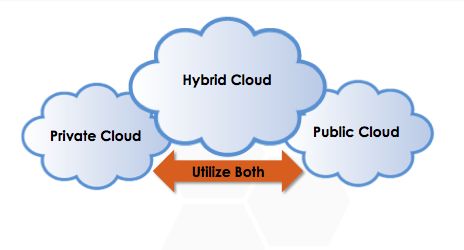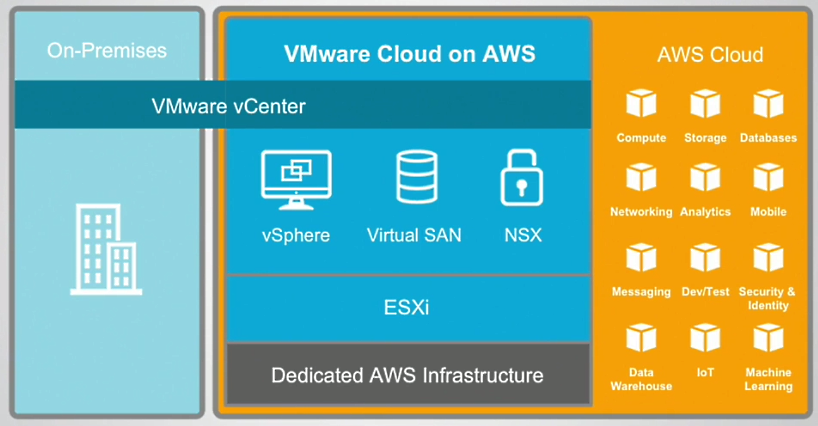In October, VMware and Amazon Web Services announced a strategic partnership that has huge ramifications for anyone working in IT. The partnership means that VMware Cloud customers can now run their software not only on their on-premise datacenters but on the AWS cloud as well. Obviously, this partnership is aimed at enterprises that are in the process of shifting from on-premise infrastructure to the public cloud. But to understand the full significance of this partnership, let’s first take a deeper look into the market forces that helped bring it about.
[tg_youtube video_id=”8GoX9h_gD3M”]
The transition to the public cloud
Many big enterprises end up with hybrid cloud setups for their legacy infrastructure but soon find it difficult to manage both separately. Most enterprises have invested close to a decade in training and development when it comes to their datacenter operations, and asking them to give up on that and start learning something new is like asking them to take a giant leap of faith. This is where companies like Microsoft and Oracle are taking advantage of the situation by moving their customers to the cloud via their software and solutions. By giving their customers something that they are already familiar working with along with the flexibility of the public cloud, they seem to have found the winning combination.
Hybrid clouds
The hybrid cloud seems to be winning the cloud war as more and more enterprises are choosing this combination of private and public clouds. The hybrid cloud is basically a combination of on-premise data centers in combination with public clouds. The advantage these hybrid clouds have is that customers can store their sensitive and mission critical data on-premise, while everything else can be stored in the cloud. This also helps keep the costs under control while giving customers a platform to work with that is still familiar to them. For such hybrid clouds, a common platform between the on-premise centers and public cloud platforms is necessary for seamless and uninterrupted workflow. Here’s where giants like IBM, Microsoft, and Oracle have an edge over AWS, as AWS does not have its own on-premise datacenter solution.

The power of collaboration
The story of “The Blind Man and the Lame” comes to mind as this is also an account about two individual enterprises combining their efforts to overcome their respective disabilities. Now, this is not to say that AWS is blind or VMware is lame, because AWS has been consistently winning enterprise customers and VMware has their applications running in probably every datacenter in the world. What the AWS-VMware alliance does is make them both a lot stronger in the context of the current market situation and the strategies that their competition are employing to get more people to the cloud.
VMware in the cloud
 Although VMware products are among the first cloud operating systems, VMware is not the sole provider of its hybrid cloud vCloud Air, which is available through a partner network. What this means is vCloud Air is not a dedicated VMware datacenter. For a while, people were even referring to VMware as the “mainframe” of the Enterprise, probably because its primary virtualization suite was shrinking and would soon support only legacy client-server applications. vCloud Air has also come to be known as the “virtualization connoisseurs cloud,” and VMware has admitted that their flagship vSphere private cloud product is in long-term decline. Another big disadvantage for VMware is the lack of developers who are enthusiastic about their container vision. But all these problems would go away if they partnered with AWS, and hence the alliance.
Although VMware products are among the first cloud operating systems, VMware is not the sole provider of its hybrid cloud vCloud Air, which is available through a partner network. What this means is vCloud Air is not a dedicated VMware datacenter. For a while, people were even referring to VMware as the “mainframe” of the Enterprise, probably because its primary virtualization suite was shrinking and would soon support only legacy client-server applications. vCloud Air has also come to be known as the “virtualization connoisseurs cloud,” and VMware has admitted that their flagship vSphere private cloud product is in long-term decline. Another big disadvantage for VMware is the lack of developers who are enthusiastic about their container vision. But all these problems would go away if they partnered with AWS, and hence the alliance.
AWS and the enterprise
The whole point of moving to the cloud, especially for startups and smaller companies, are the cost benefits along with the elasticity that it offers. With the public cloud it is no longer necessary to invest hundreds of thousands of dollars in architecture that needs to be in place just in case there is a spike in usage or just to be prepared for an eventuality. The pay-as-you-go method on AWS makes it a lot easier for smaller companies to be prepared for a boom in usage without breaking the bank. Though Amazon’s model appeals to a lot of organizations that would like to make a clean break from their existing systems, it’s not that enticing to an organization looking to integrate their existing VMware environment with the cloud. Though AWS has plug-ins for vCenter and System Center that allow them to be connected to the cloud, this is really no competition for Microsoft, which has seamless integration between its on-premise, private, and public cloud systems. For a Microsoft shop, a hop into the cloud would be relatively simple as the software and applications used to control the environment would pretty much remain the same.
Bridging the gap
The reason enterprises are choosing hybrid clouds like Azure is because of the availability of multiple products, most notably SQL, Active Directory, and the .NET platform. Using consistent software and technology across all platforms allows administrators to get up to speed without having to learn how to control new applications. So in view of seamless transition and getting more enterprises to switch from on-premise datacenters to the public cloud, the alliance between VMware and AWS has put them at the top of the list of viable and ready cloud options for the enterprise. While AWS lacked an on-premise datacenter to smoothen the transition from on-premise to the cloud, the integration with VMware means VMware datacenters can be run on-premise and in the cloud seamlessly.
This operational consistency means there’s nothing new to learn and administrators can manage on-premise and VMware cloud resources on AWS with one single set of controls. Interoperability between public and private clouds also means that developers need to spend less time sorting out complications that arise from interdependencies. The problem that VMware was having with the lack of developers rallying behind its container technology will also change now, because AWS is a favorite among developers.
[tg_youtube video_id=”CUm9iRhQZJE”]
While startups have few problems building cloud-native applications, enterprises have to ensure backward compatibility for their applications. This means that even when they move to the cloud, they need to have the same kind of security, control, and operating protocols they’ve used all these years with on-premise servers. A deep integration like this makes this move much easier for enterprises that have been considering migrating a major part of their legacy applications to the cloud but were holding back for various reasons.
Overall, with IT budgets not getting any bigger — and many getting smaller — companies are looking to reduce their data footprint by moving to the cloud wherever possible. The advantage that VMware on AWS has is that VMware is the best in enterprise-based applications in terms of performance, reliability, availability, and security and AWS is the leading cloud provider. The sheer convenience that this combination offers in terms of a hybrid cloud setup — which most enterprises seem to prefer — means this alliance has moved both organizations to the front of the line in terms of being a preferable hybrid cloud option.



